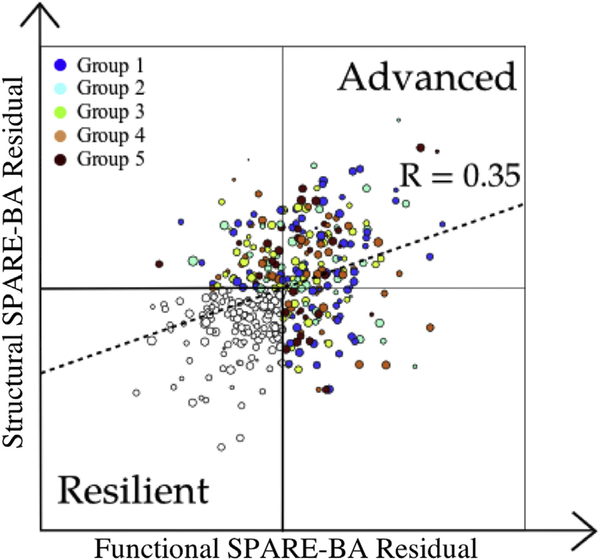Fig. 4.
The residuals of structural and functional SPARE-BA indices plotted on a 2-dimensional grid. A higher value of the residual for each index indicates that an individual’s brain age is higher than the expected typical brain age, and vice versa. Accordingly, study participants are categorized as resilient agers (both structural and functional residuals are negative) or as advanced brain agers (ABA, at least one of the residuals is positive). The size of each circle is proportional to the age of the individual. The color codes show the ABA subcategory of each ABA individual, which was automatically determined using a semisupervised algorithm. Abbreviations: ABA, advanced brain aging; SPARE-BA, Spatial Patterns of Brain Alteration for capturing brain aging. (For interpretation of the references to color in this figure legend, the reader is referred to the Web version of this article.)

